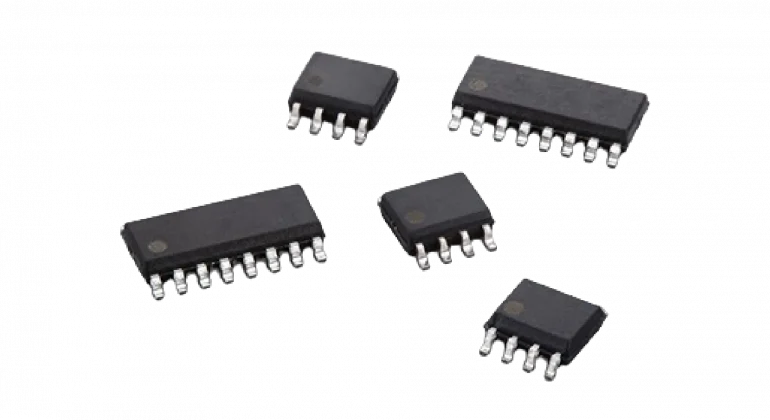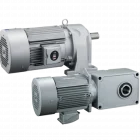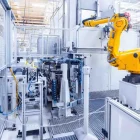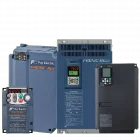Integrated circuits (ICs) are the unsung heroes of modern technology. These tiny silicon chips, often no larger than a fingernail, pack thousands to billions of electronic components into a single package. Since their invention in the 1950s, ICs have revolutionized industries by replacing bulky, unreliable circuits with compact, efficient solutions.
Today, they are the backbone of everything from smartphones to industrial automation systems like Fuji Electric’s PLCs and HMIs. This transformation has not only reduced the size and cost of electronic devices but has also significantly improved their performance and reliability.
As technology continues to advance, ICs play a crucial role in enabling innovations across various sectors. For instance, in consumer electronics, ICs power smartphones, laptops, and wearables, making them indispensable for daily life.
In the industrial sector, companies like Fuji Electric leverage ICs in their programmable logic controllers (PLCs), human machine interfaces (HMIs), and power conditioner systems (PCS) to optimize manufacturing processes and energy management.
Types of Integrated Circuits
ICs are categorized based on their function, manufacturing process, and integration scale. Understanding these types helps in selecting the right IC for specific applications.
By Function
Analog ICs
These manage continuous signals, such as audio or temperature, and are commonly used in amplifiers and filters. For example, analog ICs in Fuji Electric’s instrumentation ensure precise measurement and control in industrial settings.
Digital ICs
They process binary data (0s and 1s) and are the backbone of computing systems, including microcontrollers in PLCs.
Mixed-Signal ICs
These combine analog and digital functions, making them ideal for sensor systems that need to convert real-world signals into digital data.
By Manufacturing Process
Bipolar ICs
Known for high speed but high power consumption, they are less common in modern devices.
MOS (Metal-Oxide-Semiconductor) and CMOS (Complementary MOS) ICs
These are energy-efficient and widely used in most modern electronic devices. CMOS technology, in particular, is favored for its low power consumption, making it suitable for battery-powered devices.
By Integration Scale
SSI (Small-Scale Integration)
Basic logic gates with a few components.
MSI (Medium-Scale Integration)
More complex circuits with hundreds of components.
LSI (Large-Scale Integration)
Thousands of components, often used in early microprocessors.
VLSI (Very Large-Scale Integration)
Hundreds of thousands to millions of components, common in modern CPUs.
ULSI (Ultra Large-Scale Integration)
Billions of components, used in advanced AI processors and high-performance computing.
Pro-Tip: When selecting ICs for industrial systems like Fuji Electric’s VSDs (Variable Speed Drives), prioritize energy-efficient CMOS designs to reduce operational costs and enhance system reliability. This not only saves energy but also prolongs the lifespan of the equipment by minimizing heat generation.
How ICs Work: Components and Manufacturing
ICs are built on silicon wafers using advanced processes like photolithography and doping. Layers of transistors, resistors, and interconnects form circuits that execute tasks like speed control in Fuji Electric’s variable speed drives. The final chip is encapsulated in protective packaging, ensuring durability in harsh environments like factories.
The manufacturing process involves several key steps:
- Wafer Fabrication. Silicon wafers are prepared as the base material.
- Photolithography. Patterns are created on the wafer using ultraviolet light.
- Etching. Chemical processes remove unwanted material to create circuit paths.
- Doping. Silicon is treated with impurities to create regions with different electrical properties.
- Metallization. Metal layers are added for interconnections.
- Testing and Packaging. Chips are tested for functionality and packaged for protection.
Applications
ICs are ubiquitous in modern technology, powering a wide range of applications across industries.
Consumer Electronics
Smartphones, laptops, and wearables rely heavily on ICs for processing, memory, and connectivity.
Industrial Automation
- PLCs (Programmable Logic Controllers) use ICs for real-time machine control, enabling precise automation in manufacturing processes.
- HMIs (Human Machine Interfaces) rely on ICs for responsive touchscreens and user-friendly interfaces.
- Power Conditioner Systems (PCS) optimize energy flow with precision ICs, ensuring efficient power management in renewable energy systems.
Automotive Industry
Engine control units (ECUs) and advanced driver-assistance systems (ADAS) depend on ICs for safety and performance.
Aerospace and Defense
Navigation systems and communication equipment rely on ICs for reliability and precision.
Medical Devices
Diagnostic equipment and monitoring systems use ICs for accurate data processing and analysis.
Pro-Tip: For industrial equipment operating in high-interference environments, opt for ICs with radiation-hardened designs. This ensures that the systems remain operational even in harsh conditions, reducing downtime and increasing overall reliability.
Benefits and Challenges
ICs offer numerous benefits that have revolutionized electronics, but they also present some challenges.
Advantages
- Miniaturization. Smaller devices mean higher portability and reduced material costs.
- Cost-Effective. Mass production techniques lower the cost per unit.
- Reliability. With fewer connections, there are fewer points of failure.
- Energy Efficiency. Critical for battery-powered devices and green technology initiatives.
- High Performance. ICs enable faster processing speeds and more complex computations.
Challenges
- Heat Dissipation. Compact designs can lead to overheating issues.
- Complex Repair Processes. Due to their small size and complexity, repairing ICs can be difficult.
- Design Complexity. Creating ICs requires sophisticated design tools and expertise.
To overcome these challenges, manufacturers like Fuji Electric invest in advanced cooling systems and design methodologies that simplify repair processes. Additionally, ongoing research focuses on improving thermal management and developing more robust manufacturing techniques.
The Future of ICs
Emerging trends in IC technology are poised to further transform industries. Here are a few areas where ICs will play a pivotal role:
3D Stacked Chips
These allow for even greater miniaturization and performance enhancement by stacking layers of circuits.
System-on-Chip (SoC) and System-in-Package (SiP)
These designs integrate multiple functions into a single chip or package, reducing size and increasing efficiency.
Artificial Intelligence (AI) Chips
Specialized ICs optimized for AI processing will accelerate machine learning applications.
Quantum Computing
ICs will be crucial in developing quantum processors that can solve complex problems beyond current computing capabilities.
Fuji Electric’s focus on Power Conditioner Systems hints at ICs playing a bigger role in renewable energy management. By optimizing energy flow and efficiency, ICs can help reduce carbon footprints and support sustainable development.
Frequently Asked Questions
Understanding ICs better involves addressing some common questions about their function and role in modern electronics.
What is the main function of an IC?
ICs consolidate multiple electronic functions into one chip, reducing size and cost while improving performance. This integration allows devices to be more compact, efficient, and reliable.
What are ICs in simple words?
Think of them as microscopic electronic cities where components work together to complete tasks. Just as cities have different districts for different functions, ICs have various components that perform specific roles.
Is an integrated circuit a CPU?
A CPU is a type of IC, but ICs can also be memory chips, sensors, or power regulators. While CPUs are specialized ICs for processing, other ICs perform different functions essential to electronic systems.
What is circuit integration?
It is the process of embedding thousands of components onto a single chip, eliminating the need for bulky wiring. This integration enhances performance, reduces size, and increases reliability.
What is an example of an IC device?
The microcontroller in Fuji Electric’s HMI panels is an example. It processes user inputs and machine data, enabling efficient interaction between humans and machines.
Final Thoughts
Integrated circuits are the quiet force behind today’s tech-driven world. From streamlining factory operations with Fuji Electric’s PLCs to enabling smarter energy solutions, their impact is both vast and indispensable.
As ICs evolve, they will continue to shape industries—making innovation faster, greener, and more accessible. Whether in consumer electronics or industrial automation, ICs remain at the heart of technological progress, driving us toward a more efficient and interconnected future.
About Fuji Electric Sales Philippines, Inc.
As a proud member of the global Fuji Electric family, Fuji Electric Sales Philippines, Inc. offers product sales, promotion, and support to businesses across the country. Their solutions cover energy efficiency, automation, and power infrastructure.
Looking to enhance your systems with an integrated circuit? Contact Fuji Electric today!
Rickson Manalo
Assistant Sales Manager
0917-115 6102








